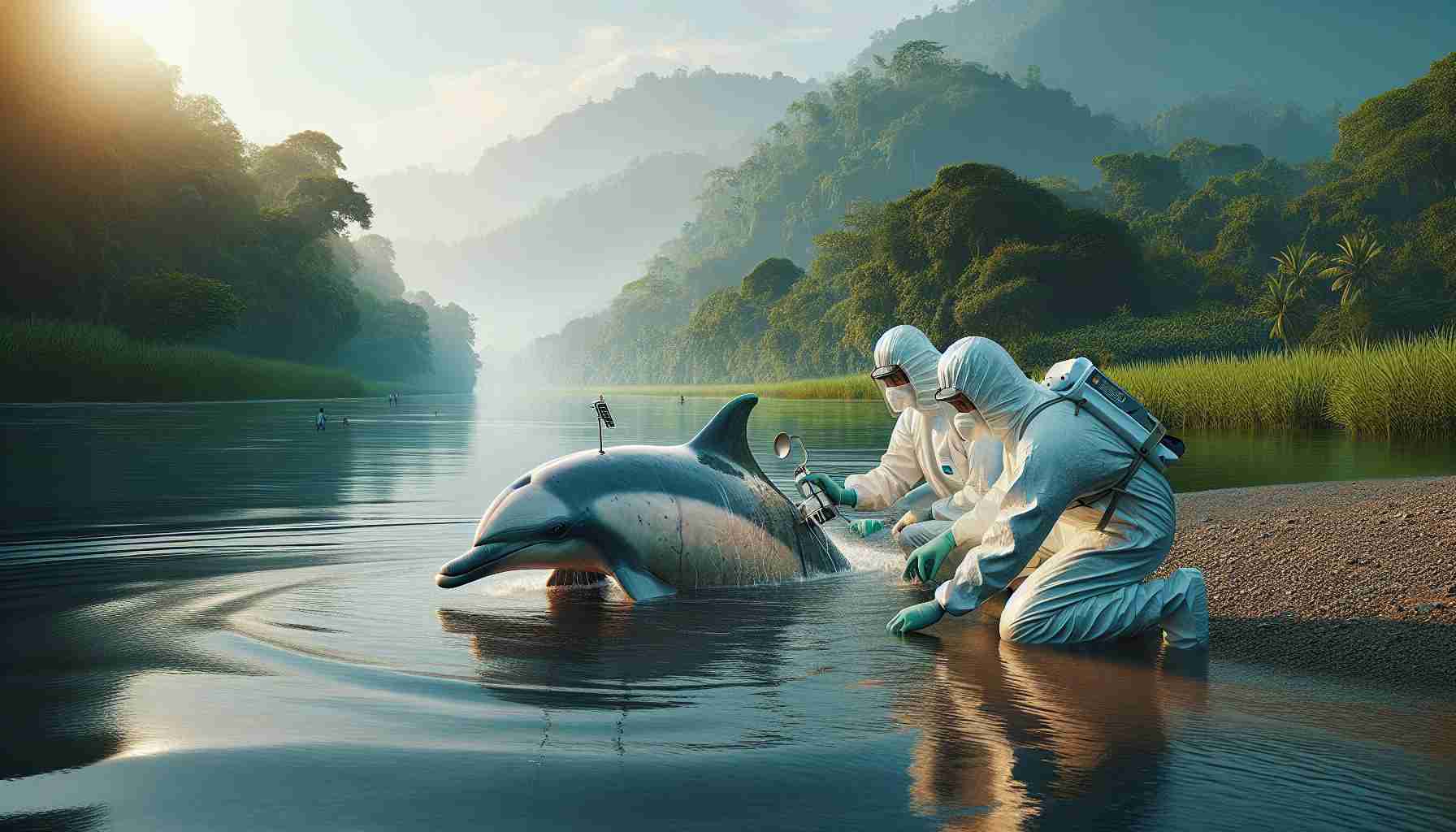Groundbreaking Conservation Efforts for River Dolphins
In a remarkable achievement, the satellite tagging of the Ganges River Dolphin was successfully completed on December 18, marking a pivotal moment for both India and the species. This initiative was spearheaded by the Wildlife Institute of India (WII) in collaboration with the Union Environment Ministry and the Assam Forest Department.
This pioneering effort serves to fill significant knowledge gaps regarding the dolphins’ habitat requirements and movement patterns, as the Environment Ministry noted. The inaugural tagging occurred in Assam, involving a healthy male dolphin carefully tagged and released under professional veterinary supervision. The outcomes of this groundbreaking exercise are expected to provide insights into the dolphins’ seasonal migration, range, and habitat utilization, especially in disturbed river systems.
The Union Environment Minister celebrated this achievement, marking it as a historic milestone. Once prevalent across the Ganga-Brahmaputra-Meghna and Karnaphuli river systems, the Ganges River Dolphin population has severely dwindled over the past century, leaving scientists with limited understanding due to the dolphins’ elusive nature.
WII’s Director emphasized that this tagging initiative is crucial for developing effective conservation strategies. Moreover, experts believe it will be vital for safeguarding the ecological integrity of river habitats, which are essential for both aquatic life and the human communities that rely on these water sources. The ministry aims to expand this important project into other regions to further enhance conservation efforts.
Transforming River Conservation: Insights from Ganges Dolphin Tagging
The successful satellite tagging of the Ganges River Dolphin has emerged as a critical milestone not just for India but for global aquatic conservation. Conducted on December 18, this initiative, led by the Wildlife Institute of India (WII) with support from the Union Environment Ministry and the Assam Forest Department, marks a pivotal advancement in understanding and conserving an endangered species.
Key Features of the Tagging Initiative
The tagging exercise involved the capture and release of a healthy male dolphin, undertaken with professional veterinary oversight. The primary goals include:
– Understanding Movement Patterns: The tagging will provide essential data on seasonal migration and habitat utilization of the Ganges River Dolphin, particularly in areas facing ecological disturbances.
– Ecological Insights: By mapping the dolphins’ movements, researchers aim to grasp the ecological dynamics of riverine systems and the broader implications on biodiversity.
Use Cases and Benefits
1. Conservation Strategy Development: The data collected will be instrumental in forming targeted conservation strategies tailored to the specific needs of the Ganges River Dolphin.
2. Monitoring Ecosystem Health: Understanding dolphin migrations can serve as an indicator of river health, which is crucial for the conservation of other aquatic species and riverine ecosystems.
3. Community Engagement: A sustainable approach not only benefits wildlife but also informs local communities about ecological practices that support both dolphins and human livelihoods.
Limitations and Challenges
While the initial tagging is a success, challenges remain, including:
– Elusive Nature of Dolphins: Ganges River Dolphins are often difficult to study due to their elusive behaviors and habitat preferences, making ongoing research a challenge.
– Environmental Threats: Ongoing threats from pollution, habitat destruction, and climate change can drastically impact both dolphin populations and river ecosystems.
Pricing and Future Initiatives
Although the financial aspects of this initiative haven’t been disclosed, funding for similar conservation projects typically comes from governmental and non-governmental sources, often requiring substantial investment to ensure sustainability.
The Union Environment Minister has expressed intentions to expand these tagging initiatives to other regions, emphasizing the necessity for a comprehensive approach to terrestrial and aquatic conservation.
Market Trends and Predictions
The emerging trend in river conservation highlights a increasing reliance on technology, such as satellite tracking, to aid in wildlife research. Experts predict that the successful tagging of the Ganges River Dolphin could inspire similar projects across other endangered aquatic species worldwide, reinforcing the critical need for data-driven conservation practices.
Conclusion
The satellite tagging of the Ganges River Dolphin signifies more than just a scientific achievement; it’s a beacon of hope for conservationists and nature enthusiasts alike. The collaborative efforts among various governmental and environmental organizations underline the commitment to preserving one of India’s most endangered species, ensuring the health of its riverine ecosystems for generations to come.
For more insights on environmental conservation efforts, visit the Wildlife Institute of India.



















